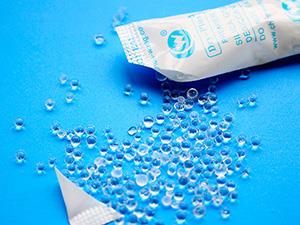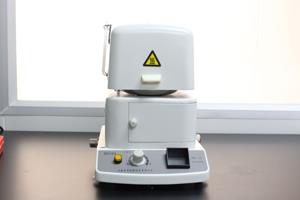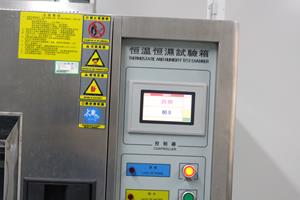Many customers will immediately test the hygroscopic effect of the desiccant when they receive the desiccant sample. However, it is found that the hygroscopic effect of the desiccant is far from our promise. Is there a problem with the hygroscopic effect of the desiccant, or is there a problem with the customer's test method for the desiccant?

Wrong way one:
Many customers say that the desiccant is hygroscopic. It can be thrown directly into the water. After a few hours, let's see if he is full.
1) The desiccant is to maintain the space desiccant by absorbing moisture (moisture) in the air. The object of the desiccant is that the water vapor is not liquid water, and the target object is not selected correctly.
2) High-quality desiccant will use waterproof and breathable packaging materials, because the desiccant absorbs moisture in the air rather than liquid water. If the desiccant is directly thrown into the water, under the action of liquid water, the water should be a waterproof and breathable packaging material, otherwise the water can also be reversed (like a sponge), thus losing the desiccant itself. Moisture absorption and anti-leakage effect.
3) After the desiccant absorbs moisture, the moisture should be adsorbed in the desiccant. The surface should not have moisture. If you take out the desiccant soaked out of the water, it will drip. This also indicates that the test method for soaking the desiccant directly into the water is not correct.

Wrong way two:
After the customer takes out the sample, he pours a cup of water directly to see if the desiccant absorbs quickly.
The desiccant absorbs moisture from the air to make the environment relatively dry. The main ability is to absorb moisture in the air instead of liquid. Not a sponge, high-absorbent resin (usually used in baby diapers) is used to absorb liquid water, so it is a mistake to directly pour moisture onto the desiccant to test the hygroscopic effect. (Note: Some desiccant manufacturers use this raw material as a desiccant, and send a video on the Internet to show how the hygroscopic effect of such desiccant is poured into liquid water. In fact, this is a behavior that deceives customers. Water adsorption performance is very good, but it cannot be used to absorb water vapor in the air.)
Wrong way three:
When doing the desiccant moisture absorption test, some customers take the desiccant outer bag and take only the desiccant material (granule or powder) for testing. This is also wrong.
1) Confused the concept of desiccant raw materials and finished products. The desiccant raw material refers to the inner wrapper of the desiccant, which is the content inside the desiccant, and any one of the contents of the desiccant can be called a desiccant raw material. The desiccant finished product is composed of a single desiccant raw material such as silica gel desiccant, mineral desiccant, and some desiccant is formed by mixing two or more chemicals (such as container desiccant, calcium chloride desiccant) Wait).
2) The role of the outer bag of the desiccant in the finished desiccant is neglected, and the outer bag of the desiccant is an inseparable part of the desiccant. Therefore, when testing, it is not possible to test only the raw materials of the contents. In fact, to some extent, packaging materials are more important than raw materials. Especially in food and pharmaceutical packaging, the direct contact with the product is the packaging material part of the desiccant. Moreover, the properties such as the strength of the packaging material and the gas permeability directly determine the quality of the desiccant.
Wrong way four:
The desiccant is directly tested in an indoor environment, but the moisture absorption effect is not good.
The temperature and humidity of the desiccant test environment are unstable. The ambient temperature and humidity have a major impact on the hygroscopic capacity of the desiccant. The open test environment can only be used to make a qualitative comparison of different desiccant products. If quantitative analysis is required, it must be tested in a constant temperature and humidity environment. The professional equipment “constant temperature and humidity chamber” is needed, and the data obtained from the test is of reference significance.
Then there is no professional "constant temperature and humidity box" equipment, you can also use a simple method instead, as follows:

(1) Preparation materials: 2 plastic cups, a fiber paper with good air permeability and hardness, and a package of unopened desiccant samples.
(2) Put a cup of hot water in a plastic cup, put it on a flat table, and put the white paper on the plastic cup (do not touch the water in the plastic cup).
(3) Disassemble a pack of desiccant, take a small sample and weigh it, and record the weight M1 of the desiccant before moisture absorption.
(4) Place the desiccant on the fiber paper and quickly cover it with another plastic cup to maintain a sealed environment.
(5) The weight M2 of the desiccant was recorded at 12h, 24h, 36h, 48h, etc., respectively. (To dry the water droplets on the surface of the desiccant as accurate data)
(6) Using (M2-M1)/M1*100%, the moisture absorption rate of the desiccant at different times was obtained.
(7) It has been observed continuously that the dry weight of the desiccant is no longer increased, and the maximum moisture absorption rate of the desiccant is obtained.
If the sample of the desiccant is too large, use a plastic sealed box (food storage box), a small bowl, and a barbed wire (plastic bowl, breathable white paper) that can withstand the weight, simulating the desiccant required for moisture absorption. Confined environment.
Remarks: If it is necessary to measure the moisture absorption rate in a short time, you can replace the new hot water after the water in the cup is cooled. The purpose of using hot water is to evaporate the water quickly enough, so that the desiccant absorbs moisture in a short time to reach saturation. status.







All trademarks shown here are for reference purposes only. They are the property of their respective owners, and we are not authorized to sell items bearing such trademarks.
